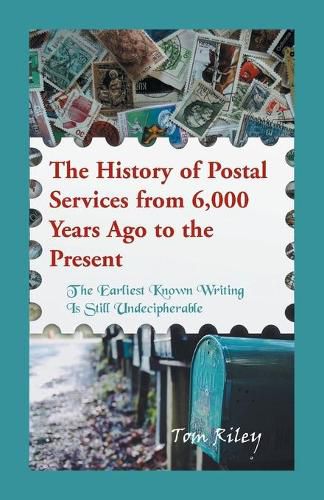Readings Newsletter
Become a Readings Member to make your shopping experience even easier.
Sign in or sign up for free!
You’re not far away from qualifying for FREE standard shipping within Australia
You’ve qualified for FREE standard shipping within Australia
The cart is loading…






This title is printed to order. This book may have been self-published. If so, we cannot guarantee the quality of the content. In the main most books will have gone through the editing process however some may not. We therefore suggest that you be aware of this before ordering this book. If in doubt check either the author or publisher’s details as we are unable to accept any returns unless they are faulty. Please contact us if you have any questions.
Communication, the lifeblood of every society has undergone tremendous advances over the centuries. One of the earliest messages, as recorded in the Old Testament of the Bible, was transported by a dove to Noah in the form of an olive branch. Moses inscribed the Ten Commandments in stone tablets to stress their importance and to etch into the memory of his people lasting principles of human conduct. The Chinese developed a Post House Relay System that used mounted couriers to deliver messages on paper. The ancient Romans, Mayans, and Incas developed systems to relay messages. This very basic need to communicate over a long distance marks the advent of postal services.
The ingenuity of man in devising means to communicate over long distance is a tribute to man’s imagination. Dogs, cats, camels and reindeer were used at various times until technology improved to the point where steamships, railroads and airplanes aided communication. As faster means of communication were devised the postal service was quick to make use of them. Now computers, satellites and fax machines provide even faster means to communicate.
This fascinating history follows the evolution of the postal system from stone tablet etchings to electronic mail via satellite. The book closes with a discussion about stamps and stamp collecting that will make readers look at postage stamps with greater appreciation. A wealth of images enhance the narrative.
$9.00 standard shipping within Australia
FREE standard shipping within Australia for orders over $100.00
Express & International shipping calculated at checkout
This title is printed to order. This book may have been self-published. If so, we cannot guarantee the quality of the content. In the main most books will have gone through the editing process however some may not. We therefore suggest that you be aware of this before ordering this book. If in doubt check either the author or publisher’s details as we are unable to accept any returns unless they are faulty. Please contact us if you have any questions.
Communication, the lifeblood of every society has undergone tremendous advances over the centuries. One of the earliest messages, as recorded in the Old Testament of the Bible, was transported by a dove to Noah in the form of an olive branch. Moses inscribed the Ten Commandments in stone tablets to stress their importance and to etch into the memory of his people lasting principles of human conduct. The Chinese developed a Post House Relay System that used mounted couriers to deliver messages on paper. The ancient Romans, Mayans, and Incas developed systems to relay messages. This very basic need to communicate over a long distance marks the advent of postal services.
The ingenuity of man in devising means to communicate over long distance is a tribute to man’s imagination. Dogs, cats, camels and reindeer were used at various times until technology improved to the point where steamships, railroads and airplanes aided communication. As faster means of communication were devised the postal service was quick to make use of them. Now computers, satellites and fax machines provide even faster means to communicate.
This fascinating history follows the evolution of the postal system from stone tablet etchings to electronic mail via satellite. The book closes with a discussion about stamps and stamp collecting that will make readers look at postage stamps with greater appreciation. A wealth of images enhance the narrative.